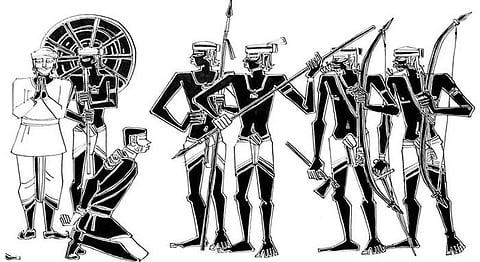
- HOMEGROWN WORLD
- #HGCREATORS
- #HGEXPLORE
- #HGVOICES
- #HGSHOP
- CAREERS
- ABOUT US
- CONTACT US

In her 1988 controversial essay titled ‘Can The Subaltern Speak?’ scholar and literary theorist Gayatri Chakravorty Spivak criticises dangers of attempting to speak for those who have no voice in society. In her analysis, the problem is rooted in the inability to truly understand and comprehend something that you have only studied and heard about ‘in words,’ not something that has been experience. Though her essay is a critique of Postcolonial intellectuals granting speech to the oppressed colonised, whom she calls subalterns, her explanations and analysis can be applied to understand several universal circumstances.
Why? Because trying to write about the dire situations and people who we are completely disconnected from forms only a portion of the complete story. Our grasp of the situation is in the form of words not lived experiences, as someone looking in from outside a marginalised group, producing logocentric assumptions that position the oppressed in relation to their ‘rulers’ rather than being granted an identity of their own.
First let’s get some background: in the context of untold stories and histories in India, there are several instances where such a theory can be applied - instances that have been conveniently left out, purposefully removed, or just simply forgotten from our historical past. Out of many, one such case is that of the Santal rebellion of 1855-56 in present day Jharkhand, then Bengal Presidency. The insurrection was against both the British colonisers and the oppressive zamindari system. The Santal tribe were agriculturalists whose land was taken over by the British upon their establishment in India. The land was then auctioned off to rich zamindars who in turn gave it for cultivation to the Santali people. Taxes increased manifold as did corruption, violence, tyranny and oppression, causing many of the tribespeople to relocate, breaking up the once-cohesive tribe; many were even forced into unpaid labour for British railroad construction. As stated by Santhaledisom, the revolt took place led by four brothers and two sister - Sido Murmu, Kanhu Murmu, Chand Murmu, Bhairav Murmu, and sisters Phulo Murmu and Jhano Murmu. Many lives were lost in the battle for freedom from oppression; Santaledisom states, “The Santal Hul [Hul is the Santal word which means movement of liberation] however, did not come to an end in vain. It had a long-lasting impact. Santal Parganas Tenancy Act was the outcome of this struggle, which dished out some sort of protection to the indigenous people from the ruthless colonial exploitation.”
There is so much more to the rebellion, most of which we never hear about nor read about. Going back to Spivak’s theory in this context, it’s more important that the people themselves tell their stories, represent themselves and their legacies, than have it stated for them. Our engagement with the situation is completely on our terms, so how accurate can it be?
“The history of Adivasi struggles and culture has always been written by others, i.e. by the mainstream historians. They have largely manipulated, ignored and even neglected the contributions of the Adivasi heroes in the freedom struggle of India… Adivaani is a response to this situation...We seek the participation of Adivasi contemporary writers, poets and researchers and anyone who feels for the Adivasi cause to help, preserve and amplify the Adivasi voice, the adivaani,” states the Adivaani website, an independent database dedicated to preserving tribal and dalit histories. In 2015, Ruby Hembrom, its author, editor and founder of Adivaani, published Disaibon Hul (Let’s remember the Hul), a revolutionary children’s book that traces the Santal rebellion along with incredible illustrations by Santal artist Saheb Ram Tudu.
Books like Disaibon Hul are much-needed and important for a number of reasons, one being the representation of India’s tribal communities; the real story being told by the people themselves to the younger generations - tribal, dalit, brahmin or otherwise - in a mission to educate and inform in a realistic manner while keeping in mind the age of their readers.
“We’re proud to be Santals, we hope Santal children will be too,” writes Ruby Hembrom. “But then, we want to share our pride with indigenous children and people all over the world: Stand for your rights, fight for your land… Disaibon Hul!”
You can visit Adivaani’s website for more information about Disaibon Hul and to get your own copy. Click here to read a very interesting in-depth review of the book by Deepa D for Caravan Magazine.
